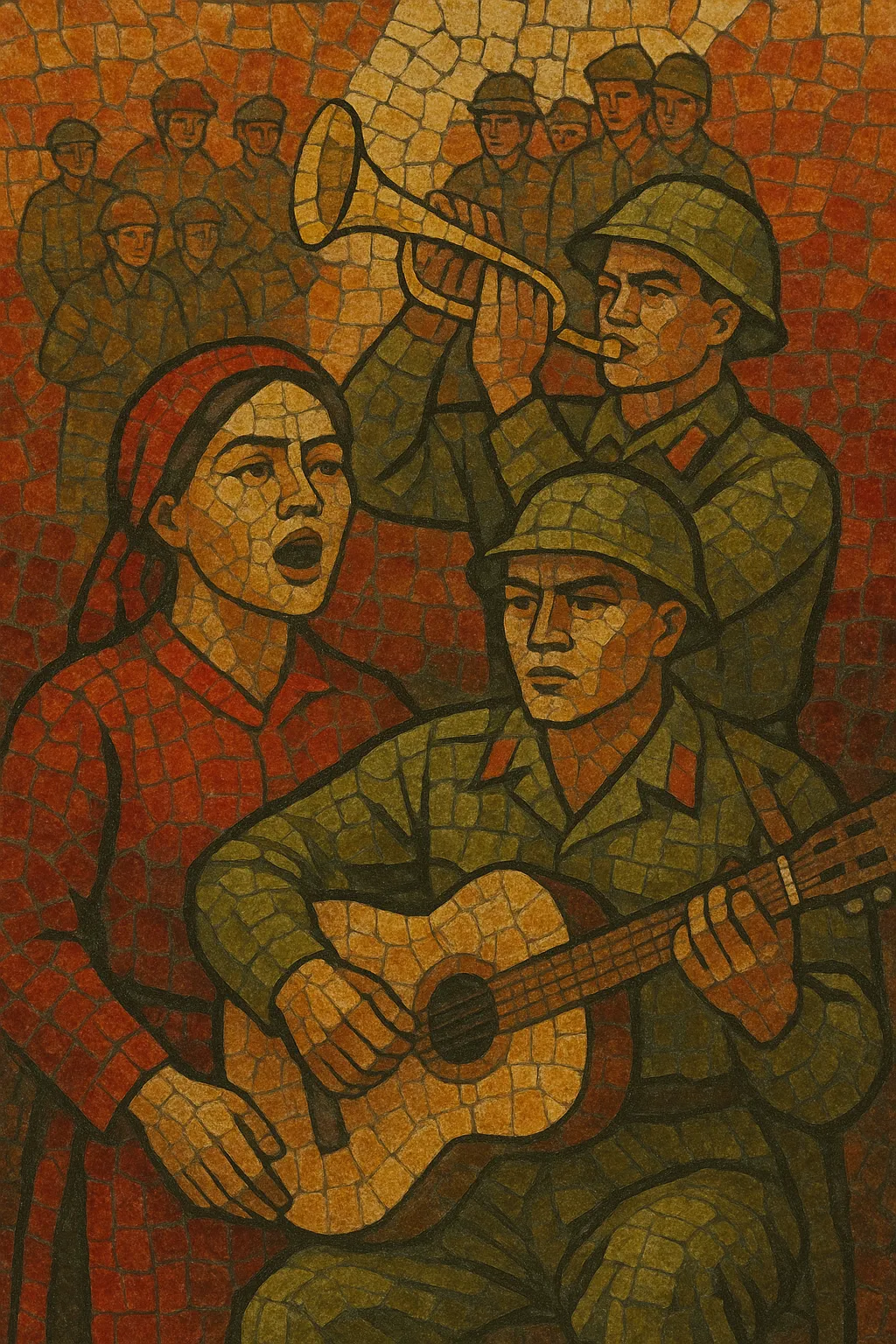Nhạc đỏ (literally “red music”) is Vietnam’s canon of revolutionary and patriotic songs that emerged during the anti-colonial struggle and crystallized in the mid-20th century. It was written to inspire collective purpose, mobilize the masses, and commemorate sacrifice, becoming the soundscape of public life in socialist North Vietnam and later the unified country.
Musically it blends Western classical harmony and military march rhythms with Vietnamese folk melodic contours and prosody. Orchestrations often feature brass, snare-and-bass drum patterns, strings, and choir, while melodies frequently trace pentatonic-leaning shapes reminiscent of regional folk traditions. Performances range from solo ballads to massed choruses, with clear, declamatory diction and easily memorable refrains.
Lyrically, nhạc đỏ centers on themes of homeland, labor, solidarity, soldiers, and heroism. Its songs are strophic, slogan-like, and singable, designed for both professional ensembles and community choirs—music meant to be learned quickly and sung together.
Early patriotic and student songs appeared in the late 1930s and early 1940s as anti-colonial sentiment intensified. Composers began adapting Western tonal harmony and march idioms to Vietnamese prosody, while drawing melodic inspiration from folk traditions. The August Revolution (1945) and the First Indochina War catalyzed a surge of revolutionary songwriting and institutional support.
In the Democratic Republic of Vietnam (North Vietnam), nhạc đỏ was formalized through conservatories, state ensembles, radio, and festivals. The genre’s musical profile—martial 2/4 or 4/4 rhythms, robust choral writing, diatonic harmony with folk inflections—became a national idiom. Songs commemorated battlefronts, labor brigades, and landscapes, serving as morale-building mass music throughout the Vietnam War.
After reunification, nhạc đỏ remained central in education, state ceremonies, and broadcast culture. Composers continued producing works in similar styles, while earlier classics became canonized as symbols of national memory, widely taught and performed by professional companies and amateur choirs alike.
While popular music diversified, nhạc đỏ endures as ceremonial repertoire and a touchstone for patriotic commissions. Its melodic and choral traits shape televised galas, school music-making, and new patriotic pop arrangements, and its anthemic language occasionally informs contemporary V-pop and cross-genre projects.


